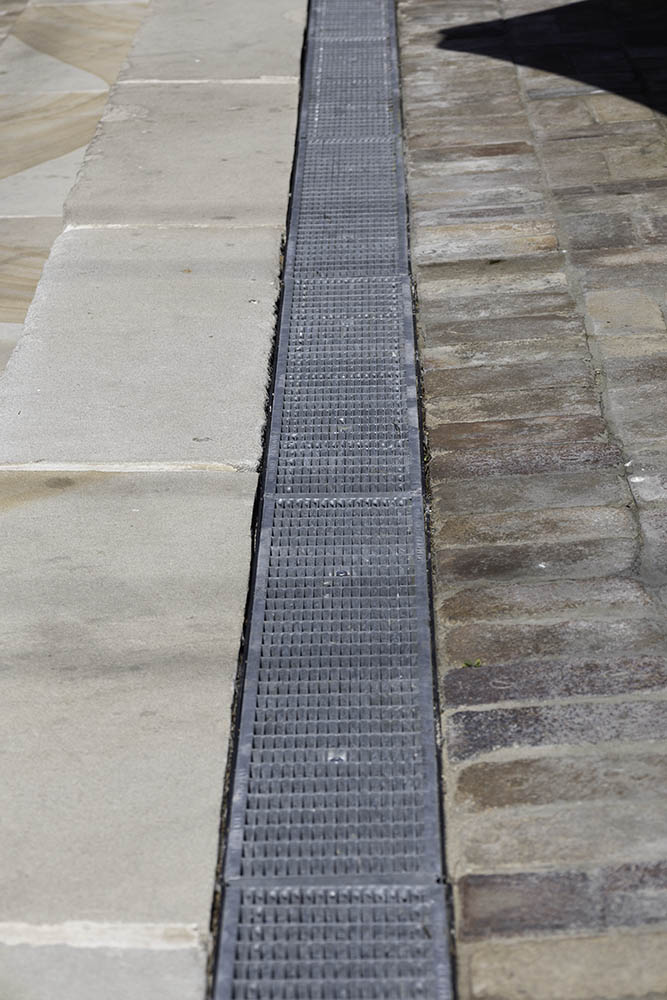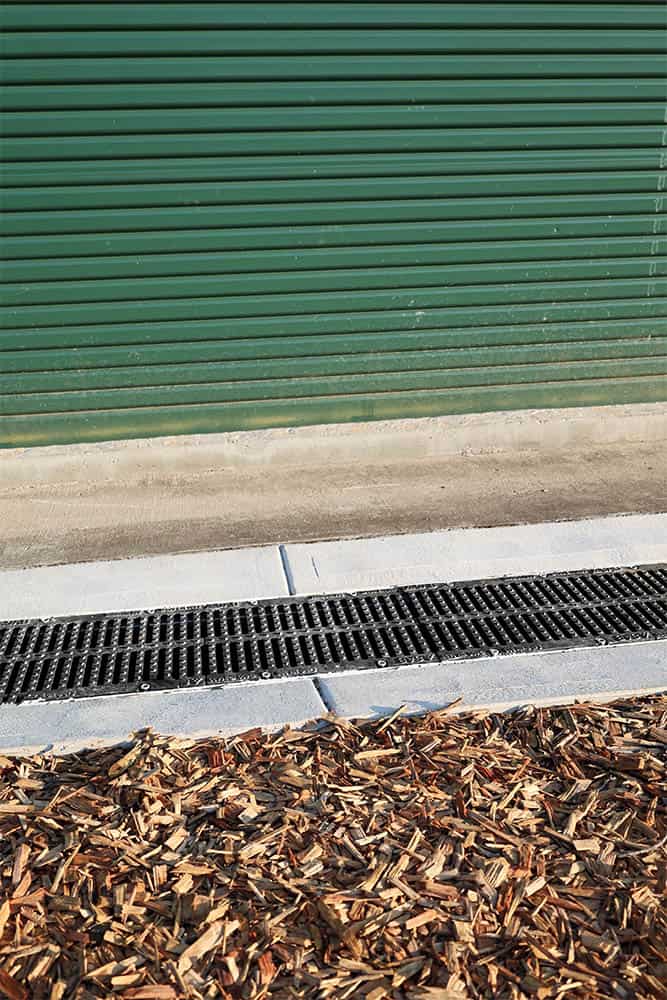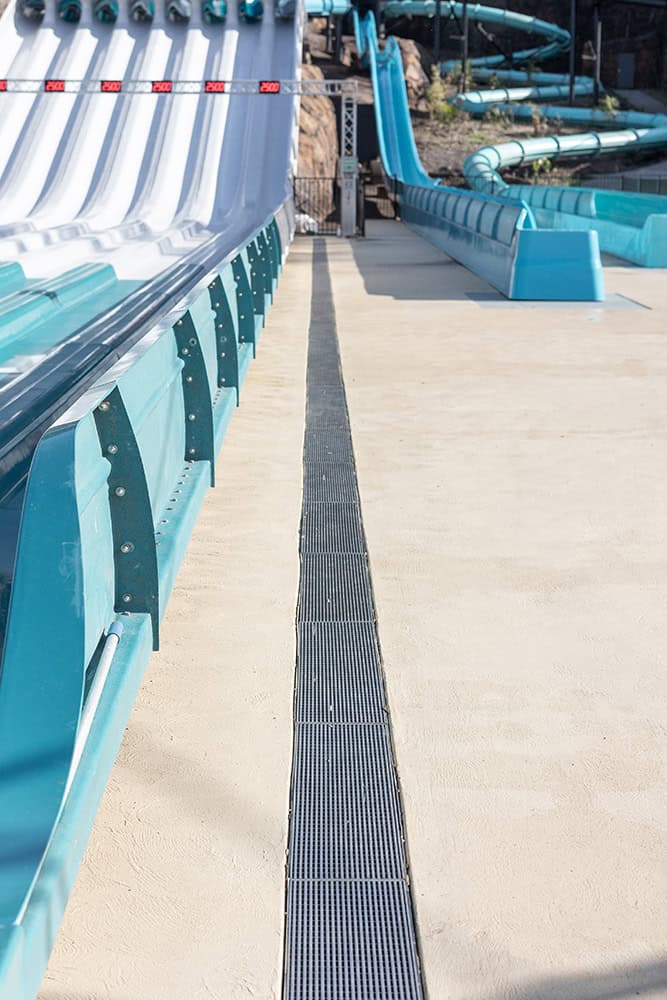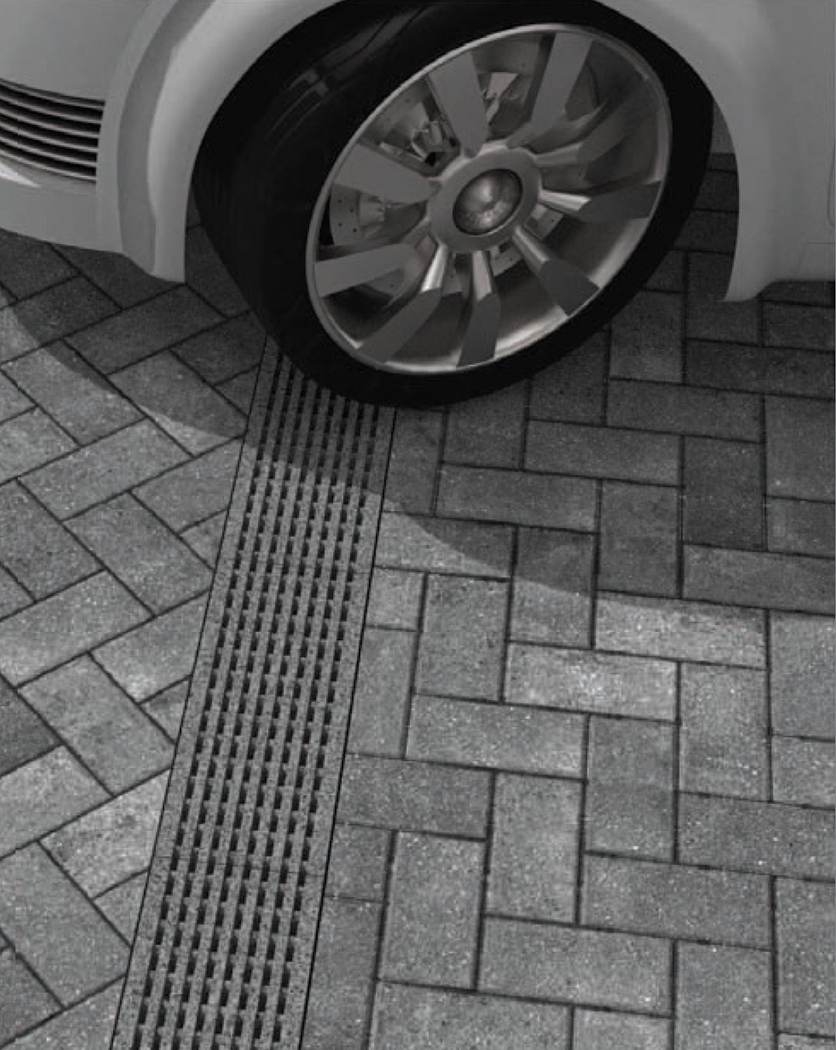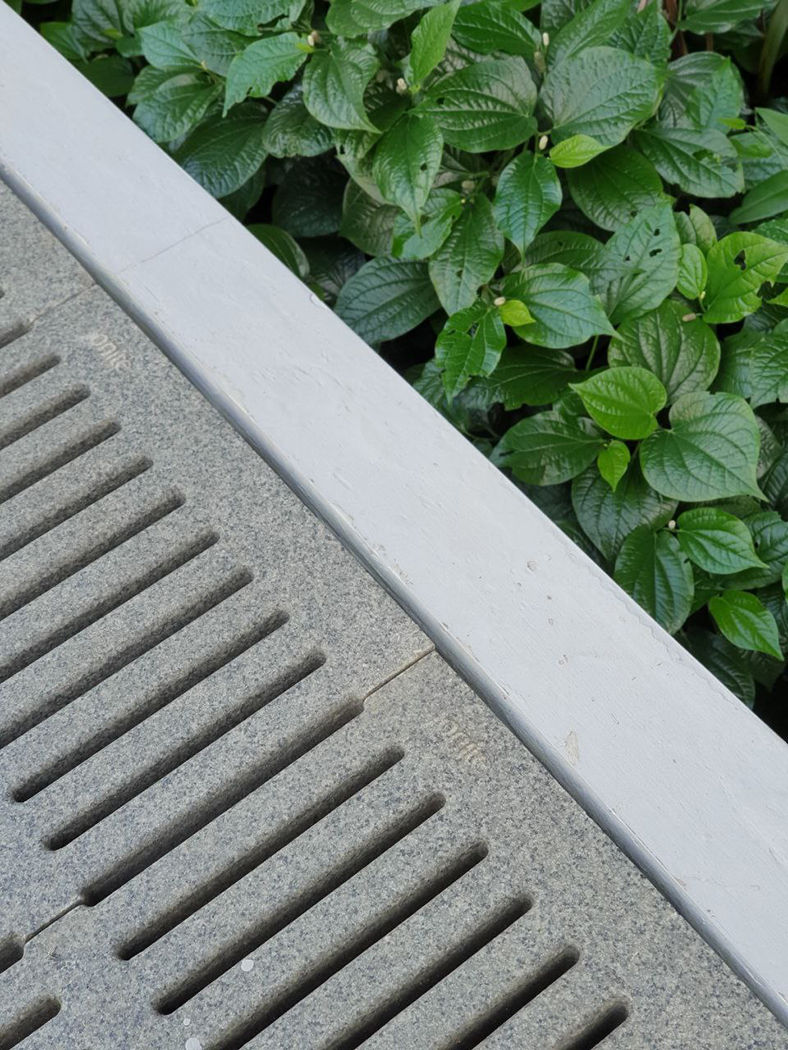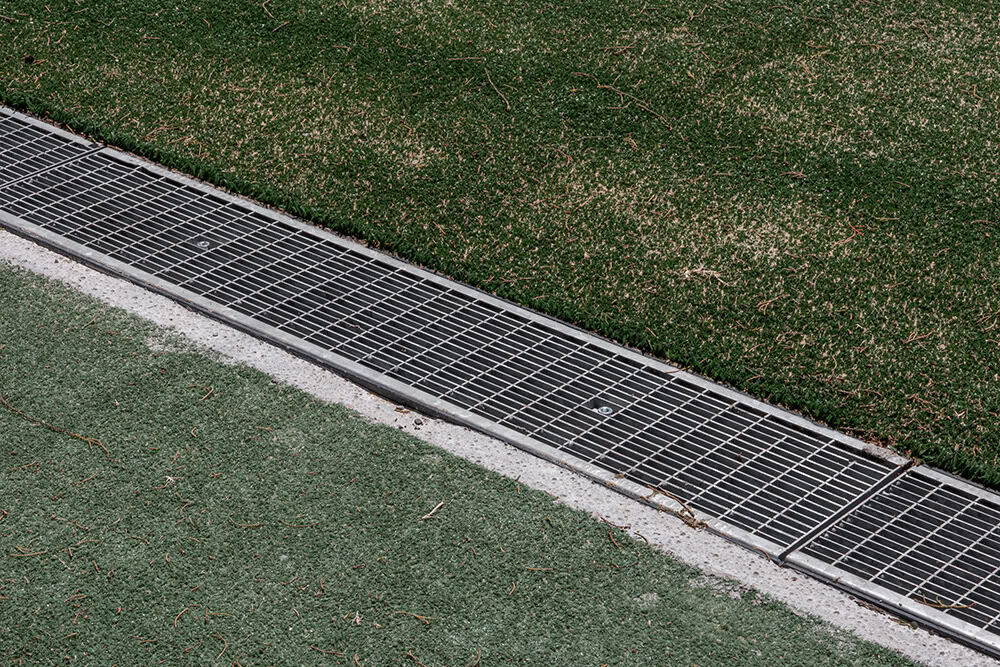When it comes to efficient water management, selecting appropriate drainage systems is crucial. Whether youre planning a commercial project, indsutrial site or residential project, the right drainage solution can make all the difference. Two of the most popular drainage options are trench drains and slot drains. While they serve similar purposes, they differ in design, functionality and ideal applications. In this blog post, we'll delve into the specifics of trench drains and slot drains, comparing their features, benefits and best use cases to help you make an informed decision.
Understanding Trench Drains
What is a Trench Drain?
A trench drain, also known as a channel drain, is a linear drainage system designed to capture surface water and direct it away from a given area. This system typically consists of a long, narrow trench with a grated cover which allows water to flow into the trench whilst keeping debris out. The trench itself can be made out of various materials including polypropylene, concrete or stainless steel.
How Do Trench Drains Work?
Trench drains function by providing a pathway for water to flow along the surface and into the trench, where it is then directed to an underground drainage system or storm sewer. The grates covering the trench are available in different materials and designs, including cast iron, galvanised steel, polypropylene or even decorative stone; each suited for various load requirements or aesthetic preferences.
Applications of Trench Drains
Trench drains are highly versatile and can be used in numerous settings, including:
- Commercial areasParking lots, sidewalks and plazas where water runoff needs to be efficiently managed.
- Industrial sitesWarehouses, factories and loading docks where large volumes of water can accumulate
- Residential areasDriveways, gardens, patios and pool decks to prevent water pooling and erosion
- Sports facilitiesStadiums, golf courses, and sports fields where maintaining dry and safe surfaces is essential.
Benefits of Trench Drains
- High CapacityTrench drains can handle significant volumes of water, making them suitable for areas prone to heavy rainfall or substantial water flow.
- DurabilityWith options for heavy duty materials, trench drains are built to withstand heavy loads and hash conditions.
- VersatilityAvailable in various sizes and materials, trench drains can be customized to fit specific project requirements.
- AestheticsWith a range of grate designs, trench drains can be customized to fit specific project requirements.
Understanding Slot Drains
What is a Slot Drain?
A slot drain is a type of linear drainage system characterised by its narrow, discreet opening that runs along the surface. Unlike trench drains, slot drains do not have a grated cover; instead they have a slim, elongated slot that allows water to enter the drainage channel below. This design makes slot drains nearly invisible and less obtrusive.
How Do Slot Drains Work?
Slot drains work by capturing water through the narrow slot on the surface and channeling it into an underground drainage system. The simplicity of the slot design minimises maintenance, as there are no grates to clean or replace. Slot drains are typically made from stainless steel or other corrosion resistant materials, ensuring longevity and reliability.
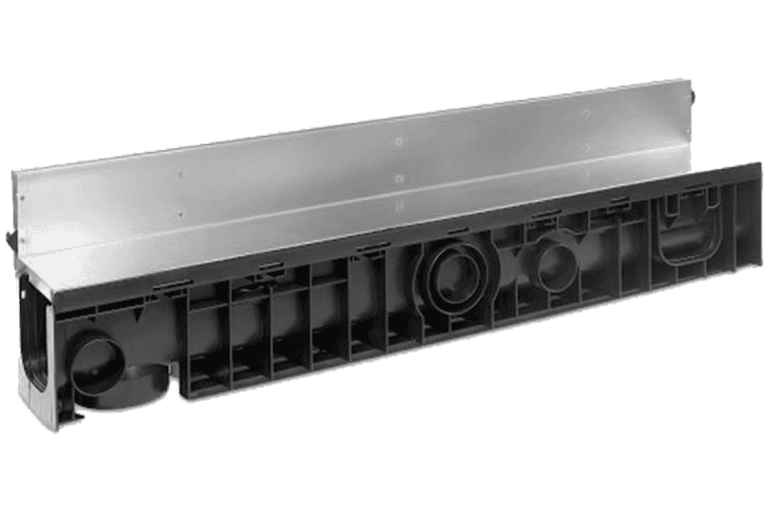
Applications of Slot Drains
Slot drains are ideal for aesthetic considerations and unobtrusive design are paramount, including:
- Discreet DesignThe minimalistic slot opening blends seamlessly with the surrounding surface, maintaining a clean and modern look.
- Low MaintenanceWithout grates to clean or replace, slot drains require less frequent maintenance.
- HygieneThe simple design reduces the risk of debris accumulation and bacterial growth, making it ideal for sanitary environments.
- DurabilityUsually made from corrosion resistant materials, slot drains are built to last even in harsh conditions.
Trench Drains vs Slot Drains: Key Differences
While both trench and slot drains serve the purpose of managing surface water, they differ in several key aspects.
Design
- Trench DrainsTrench drains feature a trench covered by a grate. The design is more visible but allows for higher capacity and versatility in grate selection.
- Slot DrainsSlot drains have a narrow, elongated slot with no visible grate, providing a sleek and unobtrusive appearance.
Capacity
- Trench DrainsTrench drains offer a higher water intake due to the wider opening and larger trench.
- Slot DrainsSlot drains may have a lower capacity but are sufficient for many appplications, especially where aesthetic considerations are prioritized.
Maintenance
- Trench DrainsTrench drains require regular cleaning of the grates to prevent clogging and ensure optimal performance.
- Slot DrainsSlot drains have minimal maintenance requirements due to the absence of grates, making them easier to clean.
Aesthetic Impact
- Trench DrainsTrench drains are more visible and can be customized with various grate designs to enhance the look of the area.
- Slot DrainsAlmost invisible,offering a seamless and clean appearance that is ideal for modern designs.
Choosing the Right Drains for Your Project
Selecting between a trench drain and a slot drain depends on several factors, including the specific requirements of your project. The volume of water to b managed, and aesthetic preferences.
When to Choose Trench Drains
- High Water VolumeIdeal for areas with heavy rainfall or substantial water runoff
- Load-Bearing RequirementsSuitable for locations where the drainage system will be subject to heavy loads, such as industrial sites and commercial parking lots.
- VersatilityWhen customization in terms of size, material and grate design is needed to match the project specifications.
When to Choose Slot Drains
- Aesthetic ConsiderationsPerfect for projects where a clean, minimalistic look is desired.
- Low Maintenance NeedsSuitable for environments where easy maintenance is a priority, such as food processing facilities.
- Sanitary EnvironmentsIdeal for places requiring high levels of hygiene, like commercial kitchens and breweries.
Conclusion
Both trench drains and slot drains offer unique advantages and can be the perfect solution for different scenarios. Understanding their differences, benefits and ideal applications will help you make an informed decision for your project. Whether you need the high capacity and versatility of trench drains, or the sleek, low-maintenance design of slot drains, choosing the right system will ensure effective water managment and enhance the functionality and aesthetics of your space.
